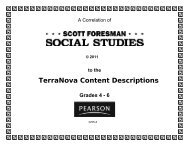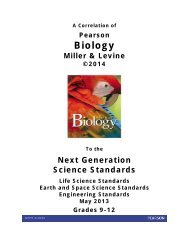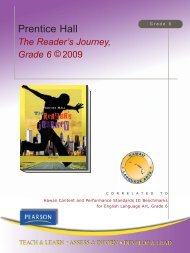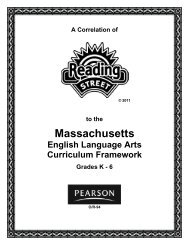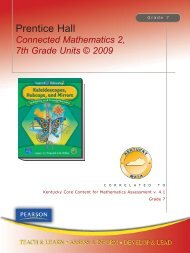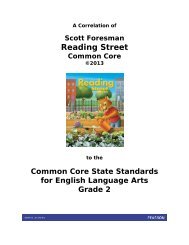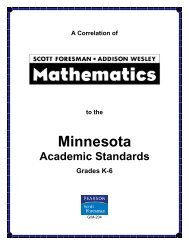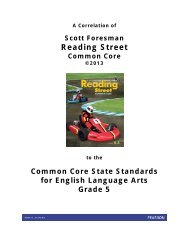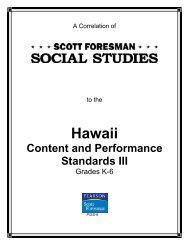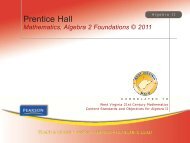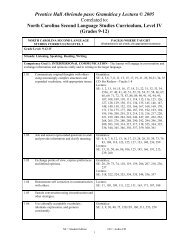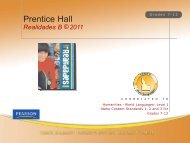Scott Foresman Reading Street - Pearson
Scott Foresman Reading Street - Pearson
Scott Foresman Reading Street - Pearson
Create successful ePaper yourself
Turn your PDF publications into a flip-book with our unique Google optimized e-Paper software.
<strong>Scott</strong> <strong>Foresman</strong> <strong>Reading</strong> <strong>Street</strong> © 2008to theCommon Core Georgia Performance Standards (CCGPS)Grade 5Common Core GeorgiaPerformance Standards – Grade 5a. Use punctuation to separate items in aseries.*b. Use a comma to separate an introductoryelement from the rest of the sentence.c. Use a comma to set off the words yesand no (e.g., Yes, thank you), to set off atag question from the rest of the sentence(e.g., It’s true, isn’t it?), and to indicatedirect address (e.g., Is that you, Steve?).d. Use underlining, quotation marks, oritalics to indicate titles of works.<strong>Scott</strong> <strong>Foresman</strong><strong>Reading</strong> <strong>Street</strong> © 2008TE 6: 699e–699fThe varied uses of commas, including usingcommas to separate items in lists, aretaught in the program’s Grammar lessonsthat, along with the Writing lessons, guidestudents in using commas to separateitems in a series.TE 1: 89f, 111f; 6: 699e–699fThe varied uses of commas, including usingcommas to separate introductory words andphrases, are taught in the program’sGrammar strand. Together with the weeklywriting lessons and the Writing andAssessment Writing Workshop, theselessons guide students in using commas toseparate introductory elements.TE 6: 699e–699fThe varied uses of commas, including usingcommas with yes and no and in directaddress, are presented in the program’sGrammar strand. Together with the weeklyWriting lessons and the Writing andAssessment Writing Workshop, theselessons guide students in using commas toseparate introductory elements.Extend the lesson by using Wings for theKing in Unit 3, Week 1, and The StormiGiovanni Club in Unit 4, Week 4, forexample, to point out commas used to setoff words (“Yes, but you would be a greatdeal closer to the ground.”) and to indicateaddress (“Thanks, Dad.”) Continue withother examples as the selections are read.TE 6: 753e–753fThe varied uses of italics, underlining, andquotation marks, including for titles, arepresented and practiced in the program’sGrammar strand. Together with the weeklyWriting lessons and the Writing andAssessment Writing Workshop, theselessons guide students in using quotationmarks, underlining, and italics to indicatetitles of works.SE = Student Edition39TE = Teacher’s Edition



